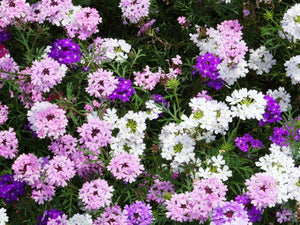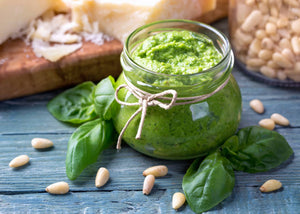Helpful Growing Tips: Tromboncino Squash from Seed to Harvest
SquashTromboncino squash is truly worth getting to know. How often do you find a squash that is not only fun to grow but resistant to squash vine borers and can be both a summer and winter squash? Sound intriguing? Then, take a look at this versatile squash.

We were introduced to tromboncino squash by a friend who had been growing it for years. She brought a long and twisting squash over to our house to try. As soon as we tasted it, we knew we wanted the seeds for this unique heirloom squash. We’ve enjoyed growing tromboncino squash and have some tips so you can enjoy harvesting it as a summer or winter squash.
What is Tromboncino Squash?
A winter squash that you can eat like a summer squash? This interesting heirloom squash originated in Liguria and is enduringly popular in Italian cuisine. What makes it so popular is its harvesting flexibility. Technically, it is a winter squash and is often eaten in summer in its young, immature stage. At this stage, it is easily substituted for zucchini in any recipe.
The long trumpet-looking squash makes it an eye-catching and fun plant to grow in the garden. You can also let it sprawl along the ground, which will result in squash with curved shapes. These “deformed squash” can be fun to use in fall decor with pumpkins.
How to Grow Tromboncino Squash from Seed
Tromboncino Squash is an excellent variety for all kinds of gardens and gardeners. The seeds are easy to germinate, and following a few helpful tips will help you enjoy a prolific harvest from summer to the first frost.

Fail-proof seed germination tips
- Sow seeds 1” deep.
- The ideal soil temperature for germination is 65 to 75ºF.
- Keep seeds moist until they germinate in 10 to 14 days.
- You can start seeds indoors or directly sow.
- If starting seeds indoors, seedlings will be ready to transplant in around two weeks.
- Space plants 24 to 36 inches apart.

Growing Tromboncino Squash
Take care to give your Tromboncino squash plants the location and conditions they need to thrive. You’ll be rewarded with a fun-to-grow plant and a delicious harvest.
Sun
Tromboncino squash thrives in full sun. Make sure your plants are in a location that receives at least 6 hours of daily direct sunlight.
Soil
Grow squash plants in nutrient-rich soil that drains well. You can add well-rotted manure and compost to the soil before planting.
Water
Plan on giving your squash plants extra water when they are producing. Well-watered plants are less stressed and able to produce sizable fruits. At least an inch of water per week is recommended, with more required during hot, dry days.

Trellising
Tromboncino squash is a vining plant, which means it produces tendrils that attach to a climbing structure. Trellising will save space in your garden and allow the fruits to stay off the ground to grow long and straight.
If you allow tromboncino squash plants to spread over the ground, the squash will likely end up curved. Sprawling plants will also produce roots on spots where the vine has good ground contact. This can help the vines to grow even more vigorously, and they can grow over 10 feet long.
Fertilizing
Squash plants appreciate a boost of nutrients during the growing season. You can top dress with compost, add a liquid fertilizer every few weeks, or apply slow-release granules. We start with extra nitrogen at planting time and then add a balanced fertilizer during the growing season.

Harvesting Tromboncino Squash
One thing we love about tromboncino squash is that it can be eaten as a tender summer squash or allowed to mature. If we have too much squash, we can leave it on the vine longer to harvest later. Unlike zucchini, which gets inedible, tromboncino makes an excellent winter squash that stores well.
One of the benefits of this long-neck squash is that the seeds are all in the bulb end. This gives you a large seed-free section to use in all kinds of dishes. Tromboncino squash can be eaten raw or cooked.
You can anticipate eating your first tromboncino squash around 70 days after planting seeds. These will be pale green, immature fruits. The skin will still be tender, and the neck will be about 1” in diameter. Even if the blossom is still on, they can be harvested. The plant produces both male and female flowers, which are both edible.
Many people prefer to eat tromboncino as a summer squash. With a sweeter flavor than zucchini, it is often used in all the same ways. You can store the young squash in the fridge for about a week.
To harvest tromboncino as a winter squash for storage, let the outer skin turn to a beige color. The skin will be harder and can be stored in a cool, dry location for a few months.
Cut the squash from the vine and leave a few inches of the vine on the end to improve storage. Cure it like other winter squashes in a warm, dry location for about two weeks.
These long squash can grow up to 3 feet long, so be prepared if you plan to harvest and store them.
Tromboncino squash are not frost-tolerant, so you need to protect them from an early frost. Either harvest them before a frost or cover them with a frost blanket.

Pests and Diseases
As a squash plant, Tromboncino will have the same pests and diseases as other squash plants.
However, many gardeners find that tromboncino plants are less susceptible to squash vine borer. It is in the same cultivar as butternut squash, which is known for being more resistant to squash vine borer.
FAQs
How many tromboncino squash per plant?
The average number of squash per plant is 6, but this vining plant can produce a lot of flowers as it continues to grow.
When do you pick Tromboncion squash?
You can pick Tromboncino squash when they are young and tender. You can also leave them on the vine; their skin will harden like other winter squash. The flesh won’t be as firm as butternut but has a similar texture.
Does Tromboncino squash need a trellis?
You don’t have to grow Tromboncino on a trellis if you don’t mind it spreading along the ground. This is a vining squash and can easily be grown on a trellis. If your goal is a long, straight trumpet-shaped squash, then you will need to grow it on a trellis.

If you love summer or winter squash and have struggled with vine borers and bugs, try growing tromboncino squash. You can use it in all your summer squash and winter squash recipes.
For an abundant harvest, add tromboncino squash to your garden. Enjoy its longevity and beautiful fruits that can hang as they grow.
Discover the joy of growing your own Tromboncino Squash with heirloom seeds from Sow Right Seeds! This delightful and versatile vegetable is sure to become a star in your garden and kitchen. Tromboncino Squash is as fun to grow as it is to eat.







Leave a comment